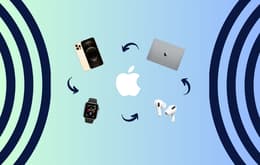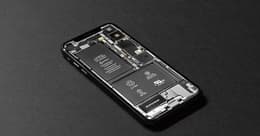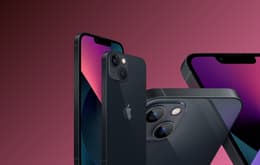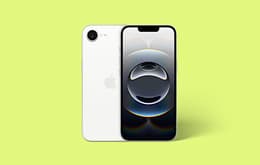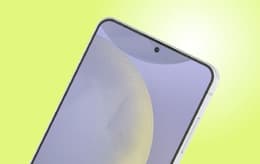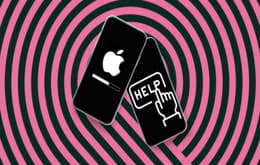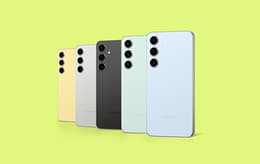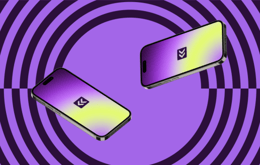
From digital detoxing to Y2K fashion, here’s why young people are increasingly turning to phones that only provide the most basic functions.
Sometimes, the very experience of checking your (smart)phone can feel like a mindless chore – one that gnaws away at the back of your mind and disrupts your day-to-day, no matter what you’re doing and how enjoyable it is. You might pick it up inadvertently, only to find nothing has changed on the array of social media apps you checked – when was it again? – less than 10 minutes ago.
The rotation feels familiar: WhatsApp to Instagram to X to Gmail. Someone you went to school with announcing they’re getting married, an ex-colleague cooking a risotto and popping it on Insta stories, a relentless echo chamber of Tweets about the trending topic du jour, not to mention the flurry of ads that populate these platforms. It’s relentless and exhausting. Scientists have even compared our phones, which have by now become an extension of ourselves, like a fully evolved body part, to “the world’s smallest slot machine” – one that promises to reward our brains with addictive mini-hits of serotonin. A pocket casino, you might call them, and there’s a lot to lose.
No wonder, then, as the world becomes increasingly loud both IRL and online, as we become more easily contactable not just by our friends and co-workers, but strangers who follow us on social media and brands who’ve mined our data, that many people have resorted to using dumbphones in a bid to regain some control over their lives. If you’ve ever wanted to throw your phone into the sea for a bit of peace and quiet, keep reading.
What’s a dumbphone, you ask?
The clue is in the name. The polar opposite of a smartphone, dumbphones are the types of device you would’ve first gotten hold of as a school kid. Think: Nokia bricks and classic Noughties-era flip-phones. A dumbphone’s function only includes the bare necessities, such as calls, texts, alarm clocks, and the occasional old-school game. Forget about any advanced features like apps, here. The priority is stripping things back to basics, in the interest of making the experience of using your phone as stress and addiction-free as possible.
How many people are making the big switch from smartphones to dumbphones, and why?
2.8 million dumbphones were sold in the US last year, and according to Nokia, searches for “Nokia flip phones” went up by 243 percent in May this year alone. That isn’t to be sniffed at,
especially given that much of this interest is being driven by Gen Z and Millennials: 28 percent and 26 percent respectively, all of whom are interested in buying dumbphones as a means of improving their wellbeing.
Enough with the stats, though. To put it plainly, people are tired of their phones eating away at time that could be better spent doing something else (finally watching that film, finishing that book, or catching up with that friend). Screen times are through the roof; dumbphones, meanwhile, allow us the opportunity to switch off and have that much more control over our mental health and attention span. Not to mention they make it easier to keep your data secure, and they last longer, both in terms of battery life and general durability, in comparison to their built-to-fail counterparts.

And then there’s the fashion…
Beyond the practical, though, the style element of dumbphones has significantly played into their popularity, which extends its reach from tech into the realm of fashion. See: the Y2K revival specifically, which has been going strong for the last five years. Butterfly clips, Miss Sixty low-rise jeans, emo band merch T-shirts and, yes, dumbphones, have rejoined many people’s wardrobe rotations in one way or another, also entering their Instagram and TikTok lexicons in the process. (The hashtag #BringBackFlipPhones on TikTok has 59.8 million views.)
Diamanté-encrusted flip-phones similar to the ones you might’ve seen Paris Hilton and Nicole Richie toting around on The Simple Life are a popular example; then there’s The Matrix’s super-popular Nokia 8110, which got a make-over a few years back, much to fans’ delight; and the Motorola Razr V3, an instantly recognisable Noughties staple whose cool hasn’t waned one bit since it was released in 2004.
These days, internet users’ hunger for nostalgia knows no bounds, from the resurgence of hyper-specific vintage fashion and the resurgence of vinyl, all the way to a newfound appreciation for old-school Game Boys and film cameras. Those of us who are the most chronically online are the ones fuelling the revival of dumbphones. On Reddit, the r/dumbphones community is 65,000 members strong, all of whom are on a quest to cure – or at least reverse – an addiction to their phones.
Even if a dumbphone doesn’t do it all, it does enough to keep your mental health in check and the constant ding or vibrate of notification hell at bay. Fighting back against that tiny slot machine in your pocket might not be for the faint of heart, but it’s worth a go, anyway.







